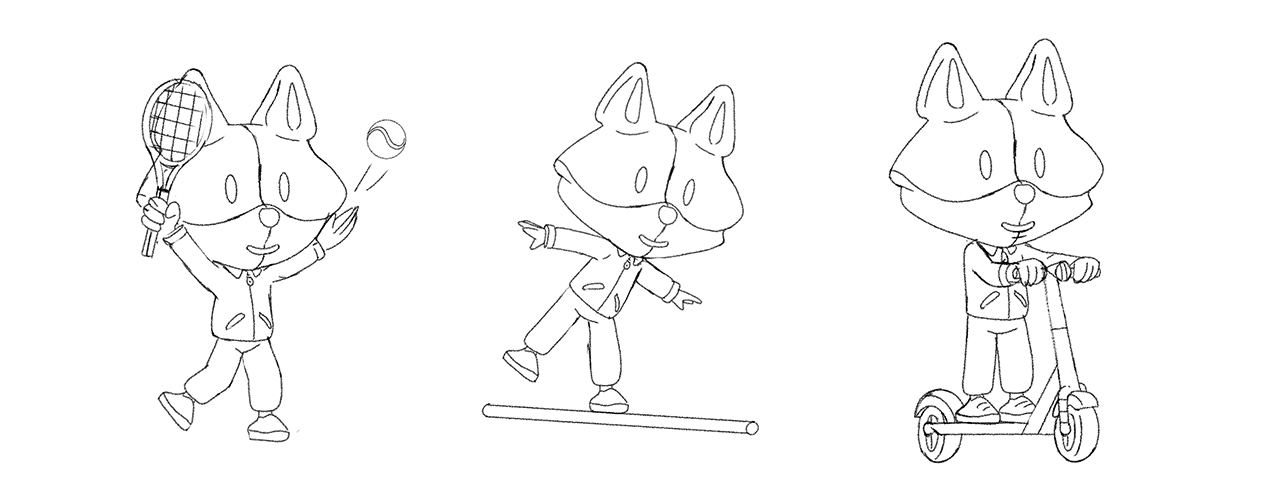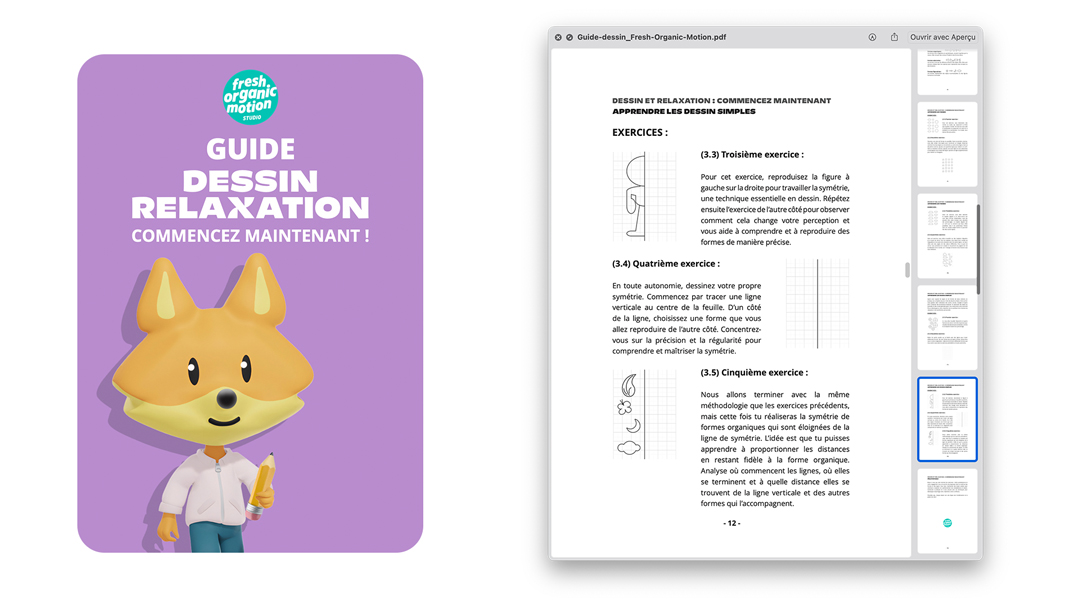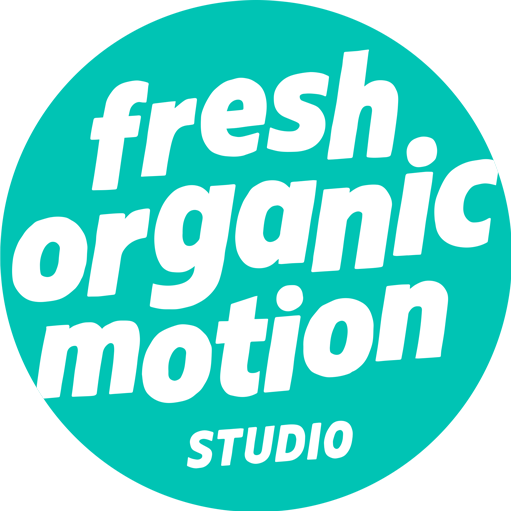How do I learn to draw?
How to learn to draw with this guide?
Drawing is more than a passion, it's a way of communicating. Unlike writing, drawing is universal. This means it can speak to anyone, without language barriers. Our studio's vocation is to help as many people as possible realize their dreams, and since our specialty is design, we share our know-how. That's why we've created this free guide. Drawing and Relaxation: Start Now" .

Why is it difficult to learn to draw?
Before explaining why learning to draw is complicated, it's important to understand that, like any activity, drawing takes time and hard work. Despite the effort involved, don't be discouraged. If you have the desire to study and practice drawing, it will be easy to make progress.
Why is learning to draw a way to take care of yourself?
Personal development, which aims to improve self-knowledge and achieve a more fulfilled life, is very much in vogue among a section of the population. An interesting activity for reconnecting with oneself is drawing. Indeed, unlike an activity carried out on the computer or smartphone, contact with paper and pencil enables a real connection in the present moment.
How to download the free drawing guide
Our guide "Drawing and Relaxation: Start Now"is available as a free download from our Gumroad page. Don't hesitate to subscribe to our Gumroad account for updates and future drawing guides.
Our guide "Drawing and Relaxation: Start Now" will help you do just that. By helping you focus on the creative process, it helps you cultivate mindfulness and reduce stress. Through simple, step-by-step exercises, this guide shows you how drawing can become a regular wellness practice. You'll learn not only how to draw, but also how to use this skill to relax and refocus. This guide is designed for those looking to integrate drawing into their personal development routine, offering accessible techniques and practical advice to make every drawing session a moment of relaxation and pleasure.

How do other people's eyes influence your learning to draw?
An important notion in understanding why you didn't continue drawing after childhood is comparison with others. Drawing is not a competition, it's a moment for yourself, a personal and unique expression. By comparing yourself to others, you lose sight of the pleasure and personal satisfaction that drawing can bring. First, concentrate on your own progress, and if you're satisfied with the result, share it with others to inspire them.
What's the technique for learning to draw by shape?
Shape is the basis of drawing, so to draw well, you need to master freehand drawing of basic geometric shapes. That's why your training will start with basic geometric shapes. You'll be guided step by step to strengthen your motor skills. By practicing regularly, you'll improve your precision and control in a fun way. Our method will make your progress enjoyable and enable you to develop your paper drawing skills in an effective and enjoyable way.
Why learn to draw when artificial intelligence can draw better than me?
Don't compare yourself, learn from others. The same goes for intelligence, whether artificial or not. Focus on yourself to bring out the best in yourself. To illustrate this point, let's take an example: you enjoy walking, even though cars exist and are a more efficient way of getting around. However, you continue to walk because walking brings other benefits to your body and mind. Drawing works the same way. Just because someone or something draws better than you doesn't mean you have to stop. Drawing offers you unique and personal benefits, regardless of how you compare with others.
What are the drawing exercises for mindfulness and relaxation?
Mindfulness is the practice of paying intentional, non-judgmental attention to the present moment. It helps to reduce stress, improve concentration and foster an overall sense of well-being. By integrating drawing exercises with this practice, you can cultivate mindful presence while developing your artistic skills.
Meditative drawing
Objective To promote relaxation and concentration.
Exercise Sit comfortably with paper and pencils. Close your eyes and take a few deep breaths. Open your eyes and start drawing simple shapes (circles, lines, spirals) slowly and repeatedly. Concentrate on the feel of the pencil on the paper and let your thoughts drift away.
Careful observation
Objective Improving observation and presence in the present moment.
Exercise Choose an object in your environment (a plant, a piece of fruit, a decorative object). Spend a few minutes observing its details: texture, colors, shadows. Then draw the object, trying to capture these details accurately.
Gratitude through drawing
Objective Cultivating gratitude and well-being.
Exercise To start each day, draw something you're grateful for. It could be a person, a moment in the day or a simple object. Take the time to focus on the positive emotions it evokes.
Mandala
Objective Promote relaxation and creativity.
Exercise First, draw a circle on a sheet of paper and fill it with repetitive, symmetrical patterns. Then, start at the center and work outwards. Finally, give free rein to your imagination while remaining focused on each stroke.
Drawing in nature
Objective Connect with nature and reduce stress.
Exercise: Go out to a park or garden. Then sit down in a quiet spot and draw what you see: trees, flowers, animals. Then concentrate on the sounds, smells and sensations of the natural environment as you draw.
More exercises to learn drawing and graphic design will be published. Keep up to date with studio news!
